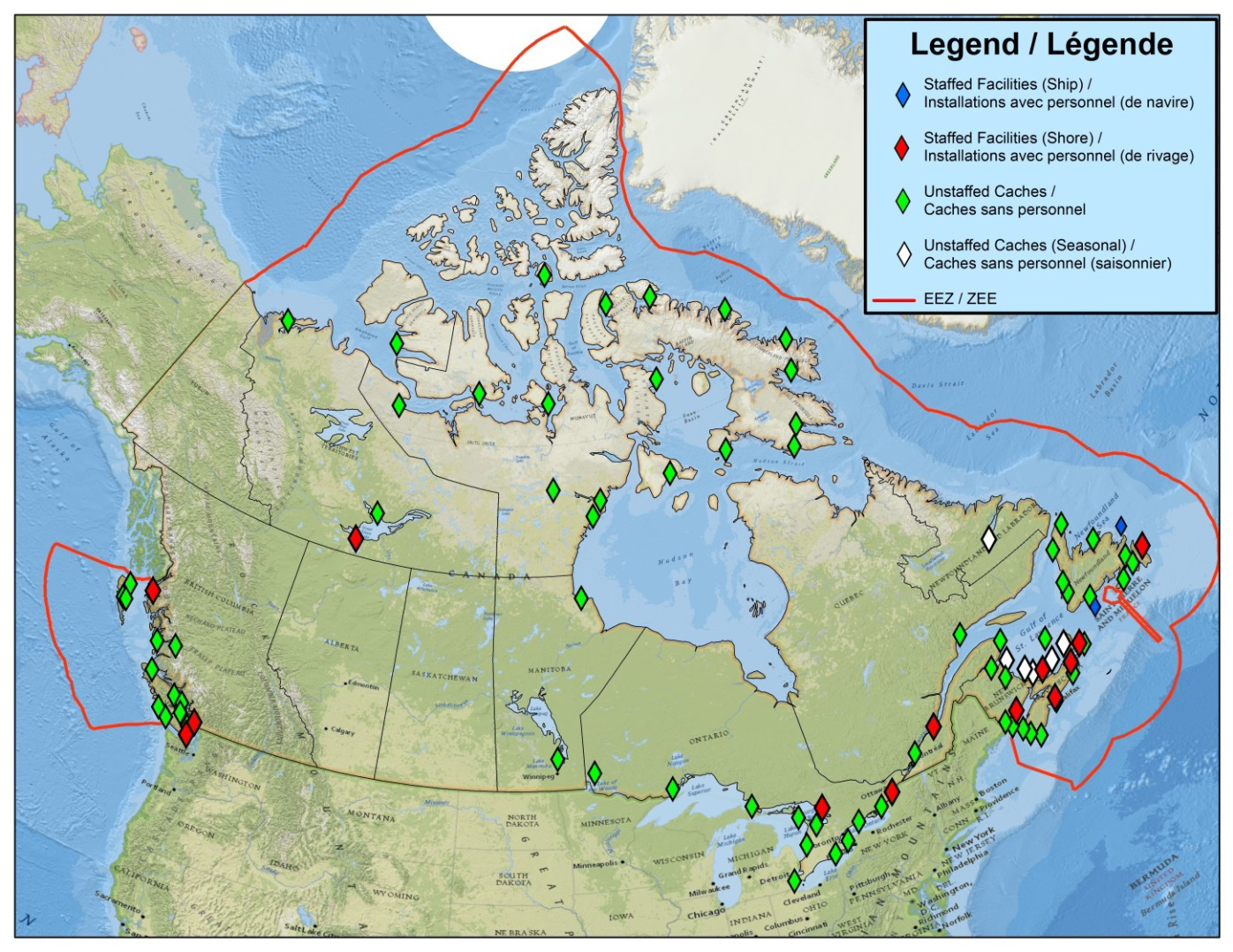Environmental Response
The Canadian Coast Guard Environmental Response program aims to reduce the impact of marine pollution spills on:
- public safety
- the economy
- the environment
- culturally significant sites
We oversee the response to spills from ships and unknown sources in Canadian waters.
Emergency planning
To stay prepared for emergency response, we:
- maintain a national plan that outlines how to respond to spills
- have specialized response teams in each region of Canada
- participate in national and international spill response exercises
- develop and maintain joint emergency plans with:
- Canadian response partners
- coastal communities
- other nations
Figure 1: Map showing the Canadian Coast Guard’s environmental response facilities and equipment caches located across Canada.

Text description of Figure 1: Map showing the Canadian Coast Guard’s environmental response facilities and equipment caches located across Canada.
Map of environmental response equipment for Canadian Coast Guard depot sites. The legend shows:
- staffed ship facilities in blue
- staffed shore facilities in red
- unstaffed caches in green
- seasonal unstaffed caches in white
Emergency response
We receive all reports of marine pollution in Canadian waters and assess the risk of pollution. We then may:
- oversee
- coordinate
- or conduct
the clean-up activities to ensure appropriate response.
Incident Command System
To conduct these response operations, we use the Incident Command System. This system is recognized internationally and helps us work with all of our partners.
Regional response teams
Our regional response teams:
- receive and assess marine pollution reports 24 hours a day, 365 days a year
- maintain environmental response facilities and equipment caches
- protect natural resources at risk including:
- birds
- clams
- marine mammals
- contain and recover pollution
- provide spill notifications to response partners and coastal communities
- coordinate spill responses amongst response partners and coastal communities
Polluter’s responsibilities
Ships and oil handling facilities must:
- report marine pollution immediately to the Coast Guard
- implement their pollution emergency plan
- use their own resources to clean-up the spill or hire a designated response organization (certified by Transport Canada) to do so on their behalf
- pay for the clean-up and damages
We will conduct the clean-up or hire a designated response organization, if:
- the polluter is unknown or unable or unwilling to respond
- the polluter’s response is insufficient or inappropriate
- the spill originates in foreign waters and impacts Canadian waters
Canada follows the “polluter pays” principle. This means the polluter is responsible for all the cost of pollution. If the Coast Guard has to conduct clean-up, we may also recover the cost through the Ship-source Oil Pollution Fund.
Our partners
To ensure that the response is efficient and appropriate, we work with:
- the polluter
- municipalities
- local private companies
- Indigenous communities
- federal, provincial and territorial agencies
- other countries
The Canadian Coast Guard has an agreement with the United States Coast Guard to respond in U.S. waters, if they require our support.
Related links
- Oceans Act
- Marine Liability Act
- Response Organizations
- Canada Shipping Act, 2001
- Preventing spills from vessels
- Arctic Waters Pollution Prevention Act
- How Canada responds to ship-source oil spills
- Marine Spills Contingency Plan - National Chapter
- National Oil Spill Preparedness and Response Regime
- World-Class Tanker Safety - Incident Command System
- Canada-United States Joint Marine Pollution Contingency Plan
- International Convention on Oil Pollution Preparedness, Response, and Cooperation
- Date modified: